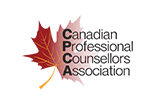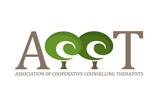
Substance abuse disorders are a common public health concern across North America, as well as internationally (Mennis, 2016). Bringing awareness to the environmental factors that have been shown to increase risk of these disorders could play a role in mitigating the number of individuals they negatively affect.
At Rhodes Wellness College, students in our Addictions Counselling program are able to look past judgment, learning to fully understand the hardships that addicts face in all aspects of their lives. This compassion and empathy is the key to helping clients feel heard and cared for, enabling them to make progress toward their recovery. Continue reading to learn about possible environmental risk factors to look out for when you begin working as an addictions counsellor.
Home Environments Seen as Contributing Addiction Factors
Studies have shown that some young adults who grow up in homes with little supervision, which could be due to a number of factors, are at higher risk of developing alcohol dependence disorders (Neumann, 2015). Environments that are particularly stressful, both for youth and for adults, often lead to increased risk. Childhood household trauma plays a significant role in risk assessment, with one study determining that addicts were 2.7x more likely to have a history of childhood sexual and/or physical abuse than non-users (Heffernan, 2000).
If you are considering enrolling in addictions counsellor training in Vancouver, it is important to be aware of the home environment of your clients who struggle with addiction. Understanding that their current household, along with the environment in which they grew up, play a significant role in their susceptibility to alcoholism can help you better address their needs.

Understanding Desire for Social Acceptance During Addictions Counsellor Training
Another significant risk factor to examine is an individual’s social environment. This can include friends, colleagues, social media users and platforms, and other types of relationships (Oswald, 2015). As a professional with addictions counsellor training, it will be important to speak to clients about their relationships with their peers, and what kinds of activities they do together in their free time.
Social settings, such as parties and happy hours where alcoholic beverages are often cheaper, more accessible, and available in large quantities, have proven to lead to binge drinking and intoxication (AlcoholPolicyMD.com, 2005). Clients who have social circles that encourage these behaviors often make it more difficult to remove themselves from their addiction. Today, these social circles don’t solely consist of local friends, but also online friends (Oswald, 2015). Social media posting with alcohol is often praised and seen as a good time, contributing to an addict’s desire to partake in the addiction and post about it for social acceptance (Oswald, 2015).

Availability and Associations as Additional Risk Factors
While social settings sometimes lead to an increased availability of alcohol, this environmental risk factor may also come from other users in the home or simply the geographical location of the individual. Some areas in the world have higher concentrations of liquor stores, making alcohol more easily available (Jones-Webb, 2013). Studies also show that homes with more structured, supportive environments with limited access to alcohol significantly decrease addiction risk factors (DeVore, 2005).
Another aspect to consider as you complete your addictions counselling training is the possibility of association drinking. Some individuals develop an addiction simply through association, which could present as having a drink as soon as they get home, or attending a specific bar that they usually go to with friends to drink (Calusa Recovery, 2021). These learned environments are just another one of the environmental factors that play a role in an individual’s risk exposure to alcoholism. With your expert guidance and help, and a true understanding of their experience and the obstacles they may face, you can help addicted clients take responsibility and improve the quality of their lives after graduating from RWC.
Are you interested in earning your Addiction Counsellor Diploma?
Contact Rhodes Wellness College for more information!
Works cited:
Alcoholpolicymd.com. (2005). The Effects of Environmental Factors on
Alcohol Use and Abuse. Alcohol & Health. Retrieved May 18, 2022, from http://www.alcoholpolicymd.com/alcohol_and_health/study_env.htm.
DeVore, E.R. (2005). The protective effects of good parenting on adolescents. Adolescent Medicine. Retrieved on May 18, 2022, from https://journals.lww.com/co-pediatrics/Abstract/2005/08000/The_protective_effects_of_good_parenting_on.4.aspx
Heffernan, K. (2000). Childhood trauma as a correlate of lifetime opiate use in psychiatric patients. Addictive Behaviors. Retrieved May 18, 2022, from https://www.researchgate.net/publication/12300850_Childhood_trauma_as_a_correlate_of_lifetime_opiate_use_in_psychiatric_patients.
Jones-Webb, R. (2013). Neighborhood Disadvantage, High Alcohol Content Beverage Consumption, Drinking Norms, and Drinking Consequences: A Mediation Analysis. Journal of Urban Health. Retrieved May 18, 2022, from https://www.ncbi.nlm.nih.gov/pmc/articles/PMC3732692/.
Mennis, J. (2016). Risky Substance Use Environments and Addiction: A New Frontier for Environmental Justice Research. International Journal of Environmental Research and Public Health. Retrieved May 18, 2022, from https://www.ncbi.nlm.nih.gov/pmc/articles/PMC4924064/.
Neumann, J. (2015). Unsupervised teens more likely to use tobacco, pot and alcohol. Health & Science. Retrieved May 18, 2022, from https://www.washingtonpost.com/national/health-science/too-much-hangout-time-is-linked-to-more-smoking-and-drinking-in-teens/2015/09/21/e3ed64c4-5e10-11e5-8e9e-dce8a2a2a679_story.html
Oswald, T. (2015). Does alcohol-related activity on Facebook promote drinking? MSU Today. Retrieved May 18, 2022, from https://msutoday.msu.edu/news/2015/does-alcohol-related-activity-on-facebook-promote-drinking









